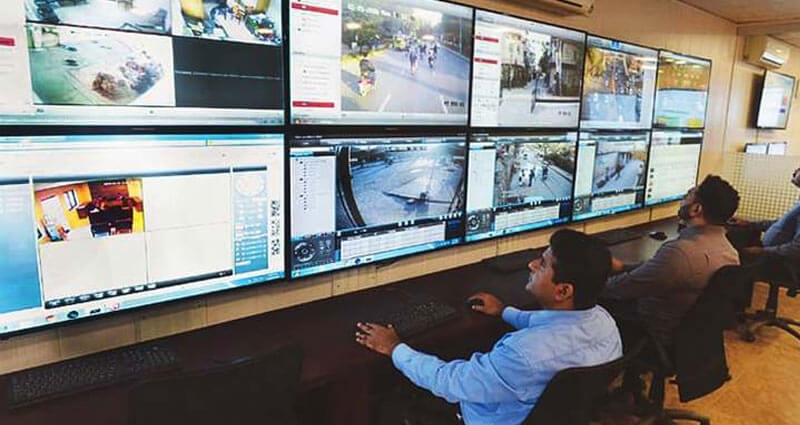People of Pakistan are well familiar with the practice and culture of record keeping and crime handling in a better way. There has been no election in Pakistan in which each political party has not included the police reforms in their manifesto including the latest in 2013. Before 2002, the whole debate on the issue was gyrating around the police law. In every serious debate on the issue, every participant used to mention the outdated police laws (at that time the laws governing police were Police Act 1861 and Police Rules 1934). A serious belief used to exist that if somehow, we can change these laws and bring a new law that can address the current needs of the country and the police, their functioning, performance and the efficiency will be matchless. So in Musharraf’s regime, this effort was done and a new Police Order 2002 emerged. Those who think that a good law is a magic wind to correct everything were disappointed to see that nothing was improved. So again the faultfinders started to criticize the law and said it needs amendments to revolutionize the police. Following which many amendments came including the Punjab Police Order Amendment 2013 and Khyber Pakhtoonkhwa Police Order Amendment 2015. In the same bid, Sindh and Balochistan not only tried to repeal the new Police Order 2002 but also tried to replace it with the same 1861 saga. Although resisted by the superior courts, the secret to police reforms was still unknown.

Fortunately, after multiple cosmetic attempts to change the police, the PTI government in the KPK looked into the real reason behind the incompetence, this time, not the outdated laws but “Archaic Technology”. The fast pace of PTI towards digitization forced its political foe, PML(N) to react digitally. Today, Punjab Police has not only matched the digitization of Police in the KPK but have surpassed them on many fronts. Recently, DPO Kasur, Syed Ali Nasir Rizvi invited me along with the district chairman Kasur, Rana Sikandar Hayat to give a detailed briefing on the digitization of Police in Punjab. Due to its length, the article will be in two parts. In this detailed article, I am enlisting and explaining the new tools which Punjab Police is using these days to fight crime in a better way. Through this, I expect, we can not only understand the current technology being used in the police departments but also devise future agenda for a better and responsive police in Pakistan.
- Police Station Record Management System (PSRMS)
- Tenant Registration System (TRS)
- Identity Verification System (VeriSYS NADRA)
- Criminal Record Management and Identification (CRMI)
- Geo-Fencing
- SOS Alert Service
- Complaint Management System (CMS)
- Crime Mapping
- Front Desk (Digital)
- CCTV Monitoring (Police Stations)
- IGP Complaint Centre (8787)
- Anti Vehicle Lifting System (AVLS)
- Daily Crime Report (DCR)
- Citizen Feedback Monitoring Program (CFMP)
- Trackers (Police Vehicle Patrolling Tracker)
- Hotel Eye
- Predictive Crime Intelligence Software (CIS)
- Jail Diary (Bail Out Accused)
- SIM Record Management (SRM)
- Mega Matcher (Face and Thumb Impression Recognition)
- Human Resource Management Information System (HRMIS)
- Police Legal Affairs Monitoring System (PLAMS)
- Digitization of FIRs
Police Station Record Management System (PSRMS) has been installed in all Police Stations of Punjab. Presently all FIRs are being entered in the system and corresponding entries in different registers are done electronically by the system itself. Rizvi explained, “the supervisory officers can see the status of a specific case and also obtain other information about recovery, witnesses, sureties, case diaries, name(s) of victims, name(s) of accused, name(s) of witnesses, challan date, next date of hearing, gender of victims etc.”
- Tenant Registration System (TRS)
Any person who takes a home on rent has to register himself/herself at the nearby police station in the TRS. Once registered, the system immediately matches it to the database to check if the tenant has a previous criminal record, is of schedule 4, any FIRs registered against him/her, is an offender. Details of his/her driving license (if any), registered vehicles on his/her name and any mobile SIMS registered on his name are shown immediately.
- Identity Verification System (VeriSYS NADRA)
In the District Control Rooms, the Police have full access “VeriSys”, a NADRA system to verify the issued CNICs of the suspected person for bringing in transparency, validation, elimination of terrorism, fraud & forgery. This is a web-based real-time activity displaying the front and rear image of the CNIC with added hidden information for verifications.
- Criminal Record Management and Identification (CRMI)
This system is meant for criminal record management and identification of criminals by using Biometrics, physical appearance and previous crime history. The main features of this system include the database of digitized fingerprints of criminals and identification of their latent and other fingerprints through automation.
- Geo-Fencing
Previously, this was done only at a few centers in Pakistan but now in the cities like Kasur, full facilities of Geo-Fencing are present. This is the use of GPS or RFID technology to create a virtual geographic boundary, enabling software to trigger a response when a mobile device enters or leaves a particular area. It is an uphill task. After a crime has happened, to find the culprit all calls to and from that area in a particular time from all cellular companies are collected. As Rizvi told, “Average data collected is usually around 4000 pages, out of which we shortlist the suspected people. Above 100 call details are obtained, through hit and trial method, intelligence and professionalism our PITB trained staff is capable of digging out the real culprit. We have unearthed many blind murders, kidnappings and child abuses through this technology successfully”.
- SOS Alert Service
The service has been introduced keeping in view the fact that at times it gets difficult for a person in distress to contact the police or to provide the exact details of their location. Through this service, any individual or the management of an institute under attack can alert the police by an application installed on their android phone. As soon as a person taps the alert button on the mobile device, up to ten different police stations in the locality will be notified by the app, while alerts would also be sent to the relevant district police control room, relevant field officers and the Central Police Office.
- Complaint Management System (CMS)
In order to entertain the complaints of the visitors, a Complaint Management System (CMS) software has been installed and the complainants are issued an E-Tag after receiving their applications. Once the application is entered into the system its follow-up is monitored by Senior Supervisory Officers and Provincial Monitoring Room located in the Central Police Office, Lahore till the matter reaches its logical conclusion. If required the application is also typed for the applicant in the Reception Rooms.
- Crime Mapping
The software is assisting the police to record daily crimes on their online repository through their mobile phones. The officer and/or the witness record the crime through their mobile phone from the place of the incident with a picture, location on the Google Map along with the date of incident and the sections of law applicable. Daily reporting on the software creates crime patterns across Lahore identifying the crime pockets, the high time of increased crime rate and the areas that are hotspots. Presented on a bigger screen the officers can visualize the crime map and redirect sources into the area where crimes are happening the most.
- Front Desk (Digital)
Gone are the days when police station clerks had to beg complainants for stationery, fuel, and food. Now, the front desks being run by civilian staff are rapidly changing the face of the police force because the station assistants are given all accessories – ranging from printers to Wi-Fi and android handsets to water dispensers. Above all, they work in air-conditioned rooms. At these gender sensitive front desks (almost an equal presence of male and female staff), well-dressed and young officers treat the complaints like the guys we see in offices of multinational companies. They immediately report complaints through a centralized online system. The visitors are given a few services on-the-spot like registration and verification of private persons and official documents. The complainants are handed over electronic-receipts. The senior officers monitor the whole system from different systems and locations. The process has been speedy, for example, the desks have been made and are operational in each and every police station of district Kasur.
- CCTV Monitoring (Police Stations)
All front desk officers are being monitored in the district control room through CCTV so that their presence, desk internal environment and officer’s presence at the desk can be seen live by the superior officers. This is to ensure the continuity and sustainability of the system.
(Continued …) Click Here



